10-11-2016, 10:23 PM
(This post was last modified: 10-11-2016, 10:45 PM by mr_skittle.)
Common Buckthorn (Rhamnus cathartica) is a pretty common invasive species all around the Great Lakes (and beyond I'm sure). I frequently hike a piece of city land where they have recently done a removal and treatment of the shrub. While most of the wood is pretty small in diameter I was lucky enough to find a few that were worth bucking up and dragging back to the car. Something I was happy to think of at the time was to get pieces with a crotch. I've never used this wood before, has anyone else? I believe I've heard its good for turning...
I got a really great, old Delta bandsaw last summer and had yet to work much with it. After poking around online a bit I found a couple of log resawing sleds that I liked and threw one together. It's really remarkable how easy it is to cut logs on your bandsaw with a decent sled and a good resaw blade. I have to say I was a little giddy about it, especially when I saw the results. See for yourselves.




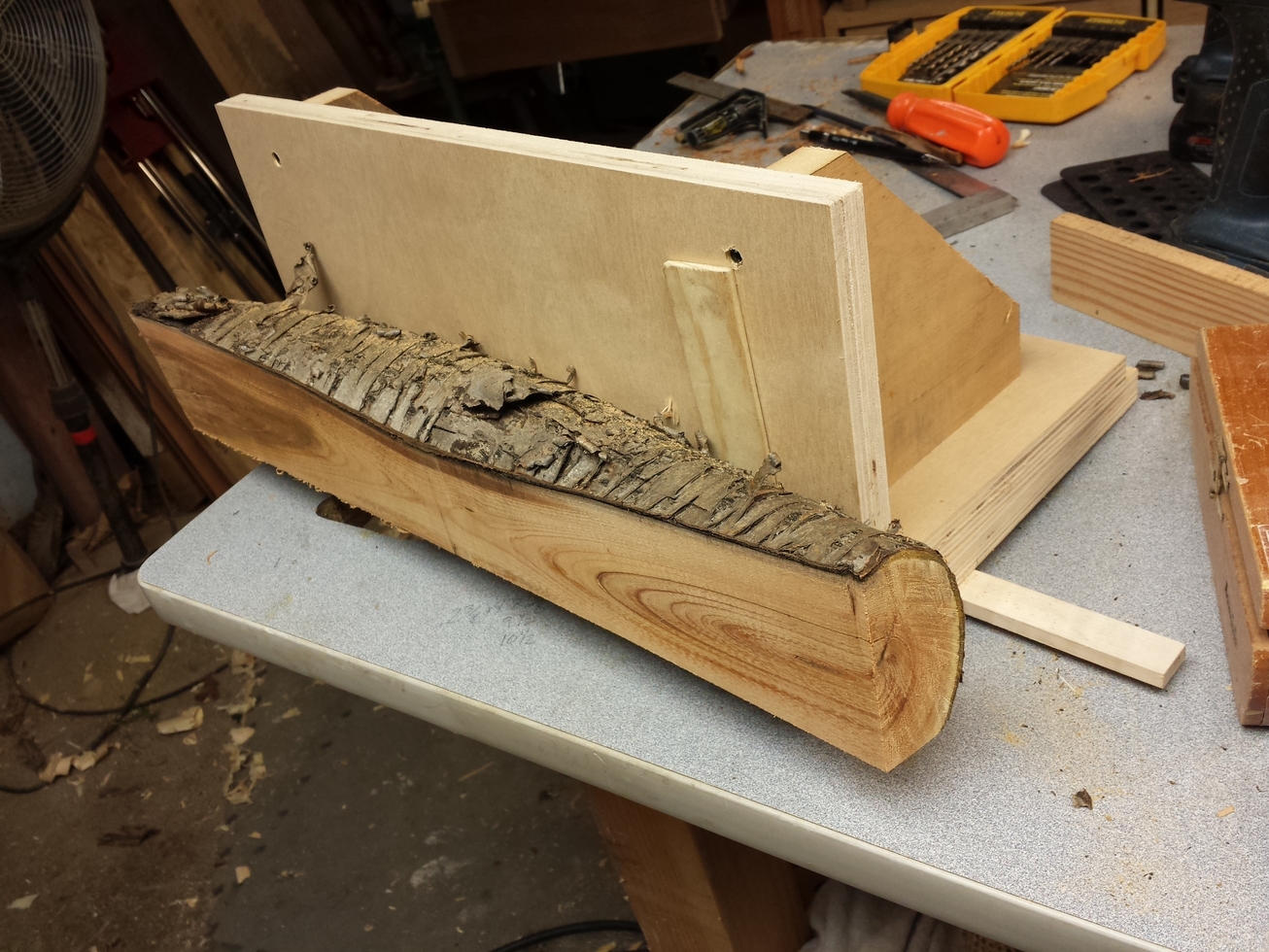

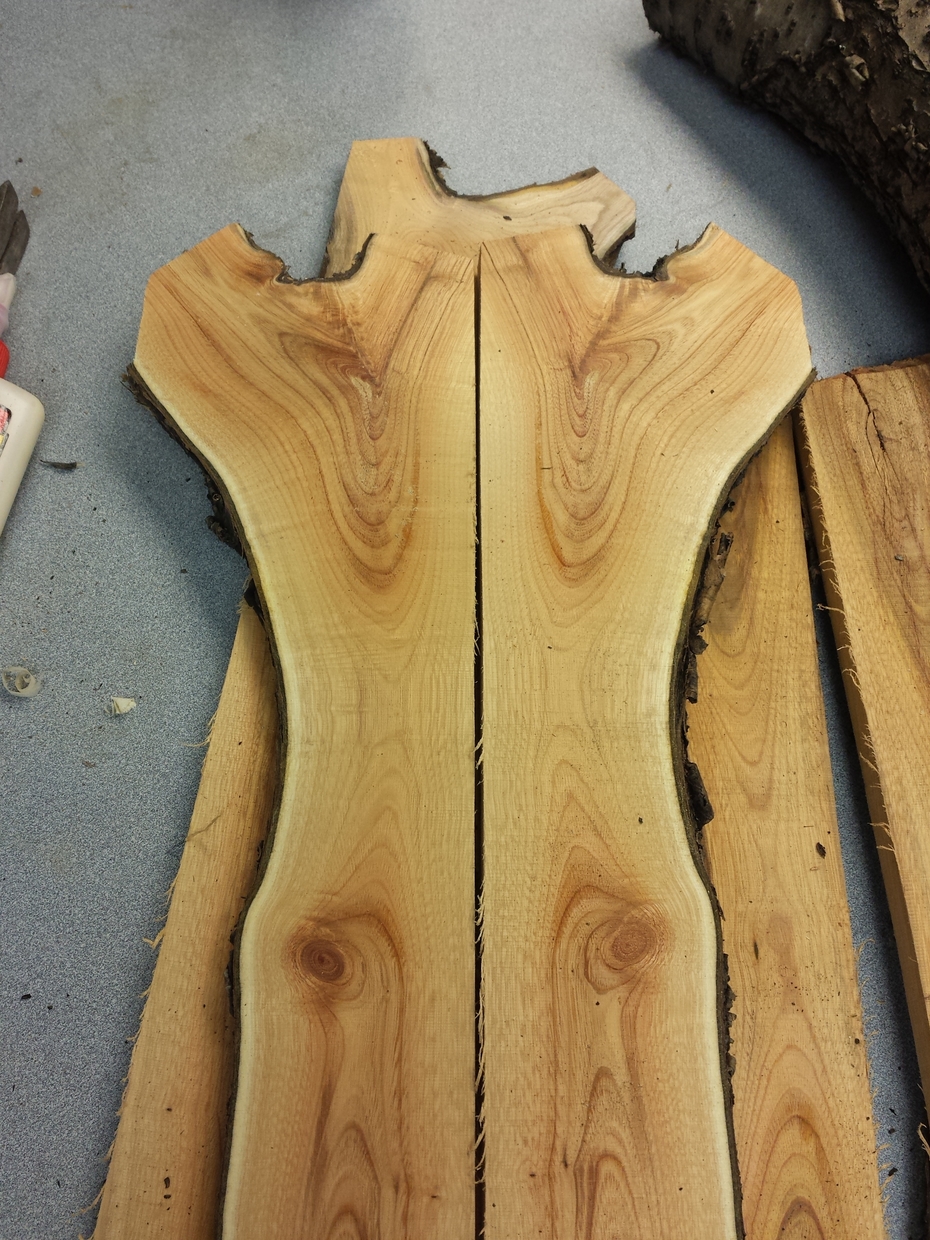

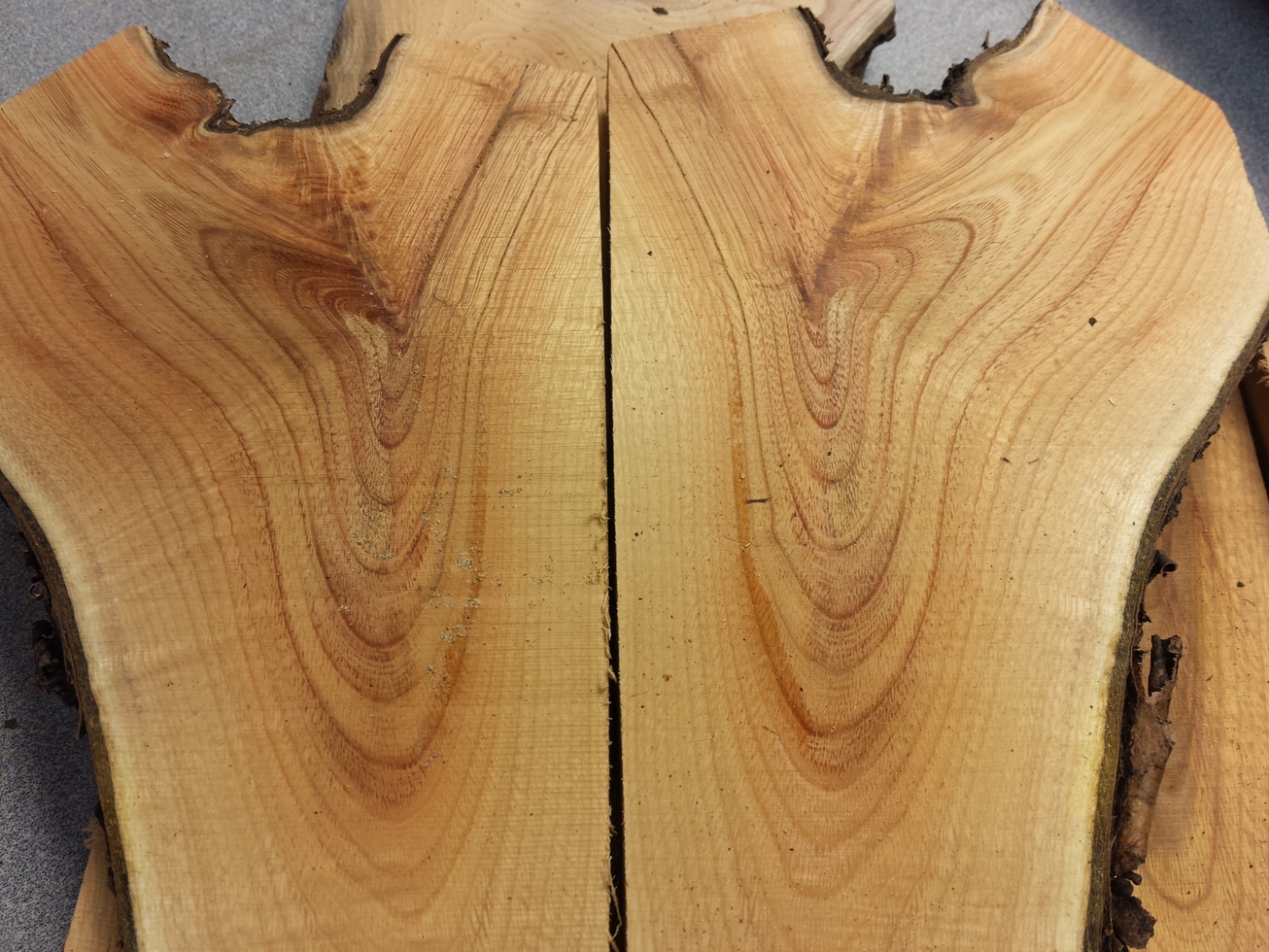

Turns out I'm still learning the ins and outs of the new system. Guess I can only put 5 pics per post, or there's a total size limit. Here's a few more pics. This method makes for quite a bit of waste it turns out. Not a bad stack of really nice wood. I cut it at about 5/8 - 3/4 thick hoping for some usable half inch material. I should be able to get about 4 inch wide boards out of it. I'm thinking picture frames or small boxes maybe. Any suggestions for how to use the crotch pieces in a way that shows them off?
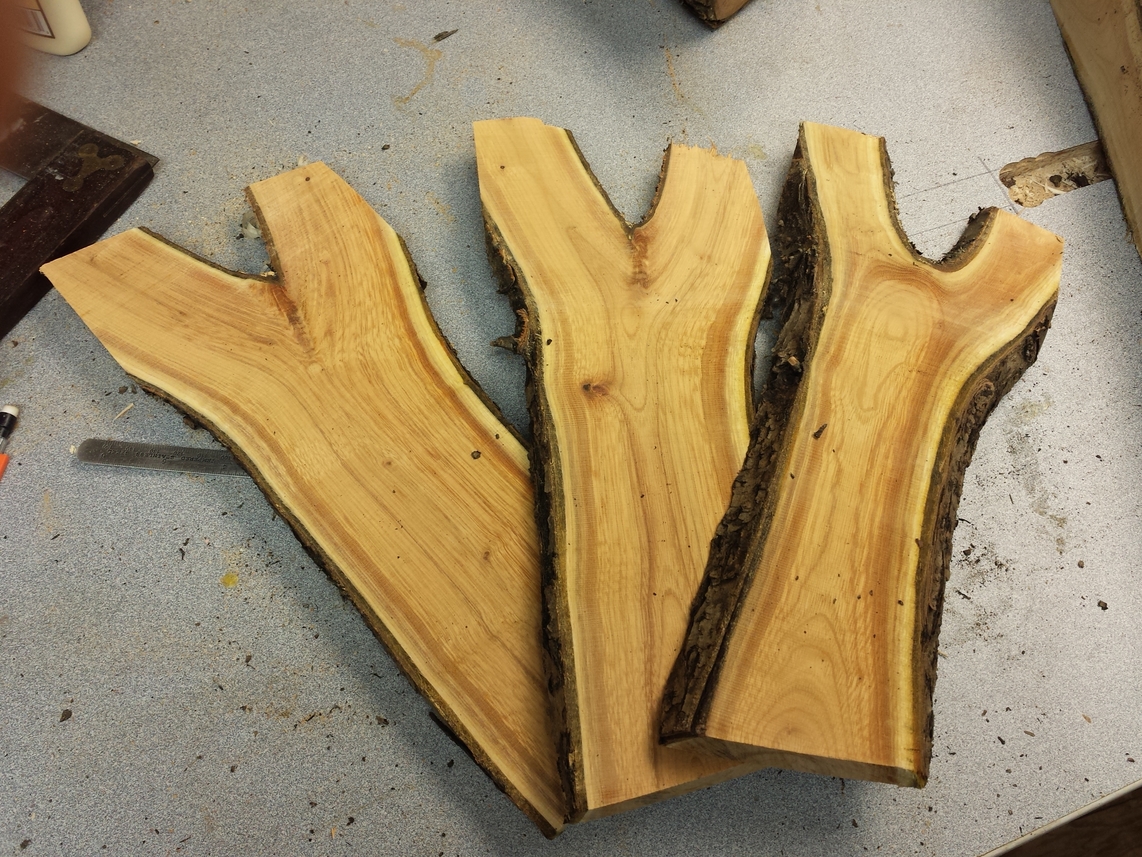

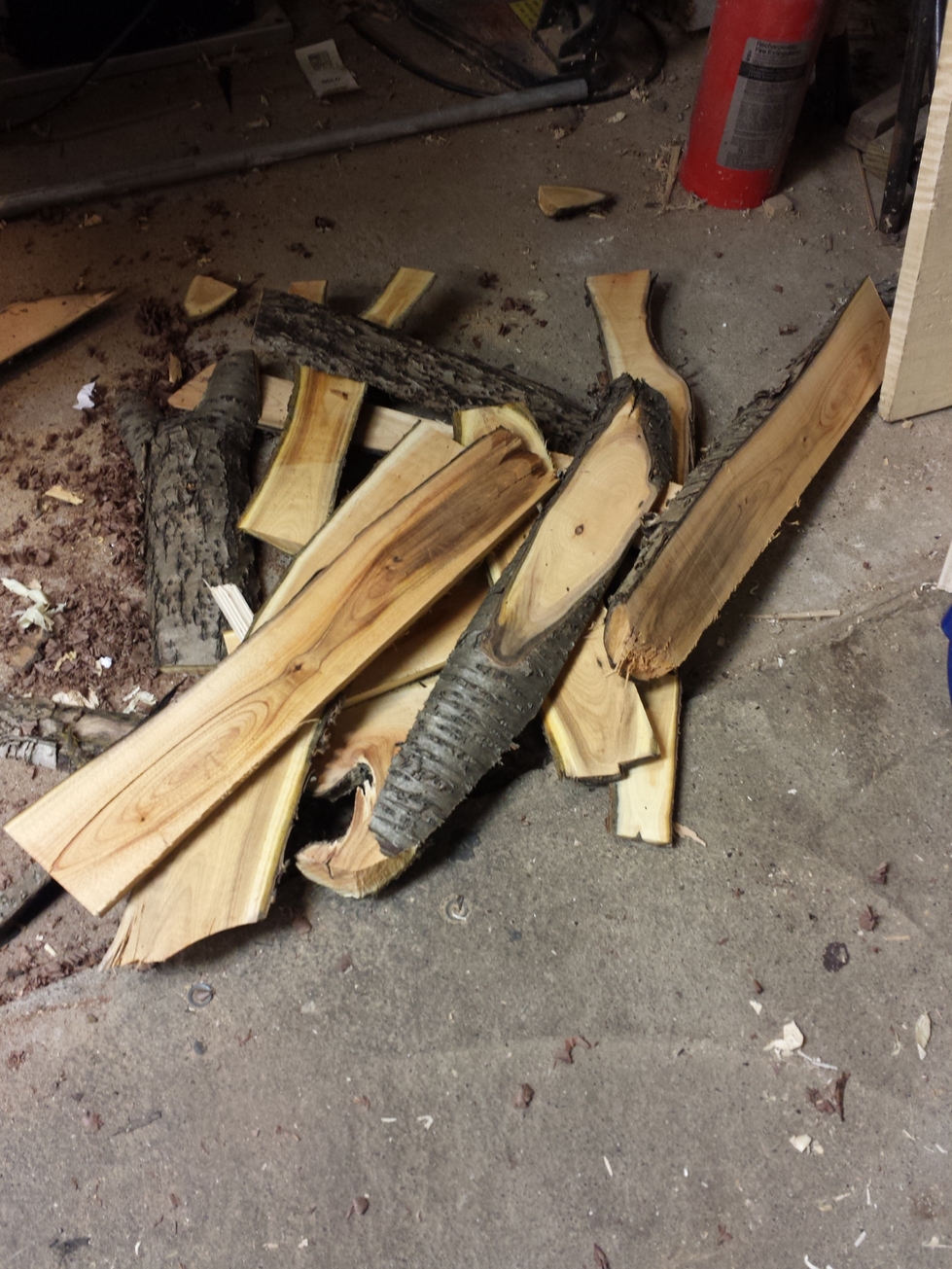



I considered whether or not to share this next bit, but we're all kind folks here right? No need to be too embarrassed...
As I said, this bandsaw hasn't seen much action since I got it and gave it a full tune-up last summer. I know most everything about best practices on the bandsaw but as we all know, skill comes with practice. For the first 2 logs I hadn't had any issues when I occasionally backed the sled out past the blade after a cut, but on the second to last cut I lost focus and it's going to cost me $30. There was some frayed splinters on the end from the chainsaw cut and as I tried to back up the sled, the blade caught on them and forced my fairly new Wood Slicer blade into the metal blade guard. You can all guess the results. I tried to make another cut and it was miserable. The blade was shot, or is it? Can anyone tell me if it can be sharpened or am I looking at an order to Highland Woodworker? Definitely a learning moment but I can almost guarantee it won't happen again.
So there, I've laid my foolish move out on the table for everyone to see. Say what you will, but rest assured that I've already cussed myself out for it.
I got a really great, old Delta bandsaw last summer and had yet to work much with it. After poking around online a bit I found a couple of log resawing sleds that I liked and threw one together. It's really remarkable how easy it is to cut logs on your bandsaw with a decent sled and a good resaw blade. I have to say I was a little giddy about it, especially when I saw the results. See for yourselves.





Turns out I'm still learning the ins and outs of the new system. Guess I can only put 5 pics per post, or there's a total size limit. Here's a few more pics. This method makes for quite a bit of waste it turns out. Not a bad stack of really nice wood. I cut it at about 5/8 - 3/4 thick hoping for some usable half inch material. I should be able to get about 4 inch wide boards out of it. I'm thinking picture frames or small boxes maybe. Any suggestions for how to use the crotch pieces in a way that shows them off?



I considered whether or not to share this next bit, but we're all kind folks here right? No need to be too embarrassed...
As I said, this bandsaw hasn't seen much action since I got it and gave it a full tune-up last summer. I know most everything about best practices on the bandsaw but as we all know, skill comes with practice. For the first 2 logs I hadn't had any issues when I occasionally backed the sled out past the blade after a cut, but on the second to last cut I lost focus and it's going to cost me $30. There was some frayed splinters on the end from the chainsaw cut and as I tried to back up the sled, the blade caught on them and forced my fairly new Wood Slicer blade into the metal blade guard. You can all guess the results. I tried to make another cut and it was miserable. The blade was shot, or is it? Can anyone tell me if it can be sharpened or am I looking at an order to Highland Woodworker? Definitely a learning moment but I can almost guarantee it won't happen again.
So there, I've laid my foolish move out on the table for everyone to see. Say what you will, but rest assured that I've already cussed myself out for it.
How do you know you're learning anything if you don't screw up once in awhile?
My blog: http://birdsandboards.blogspot.com/
My blog: http://birdsandboards.blogspot.com/



